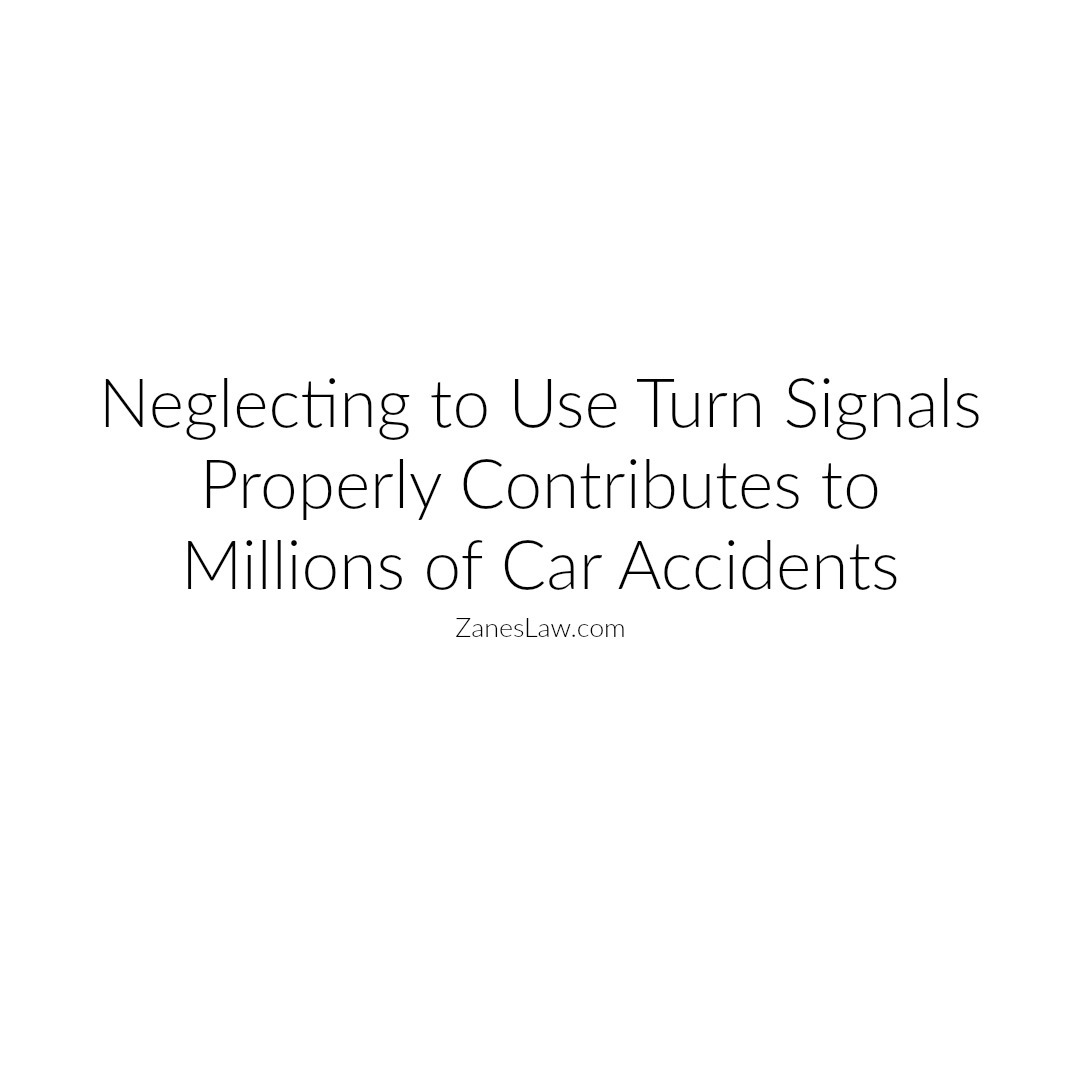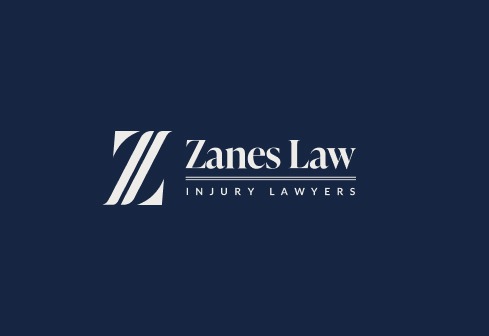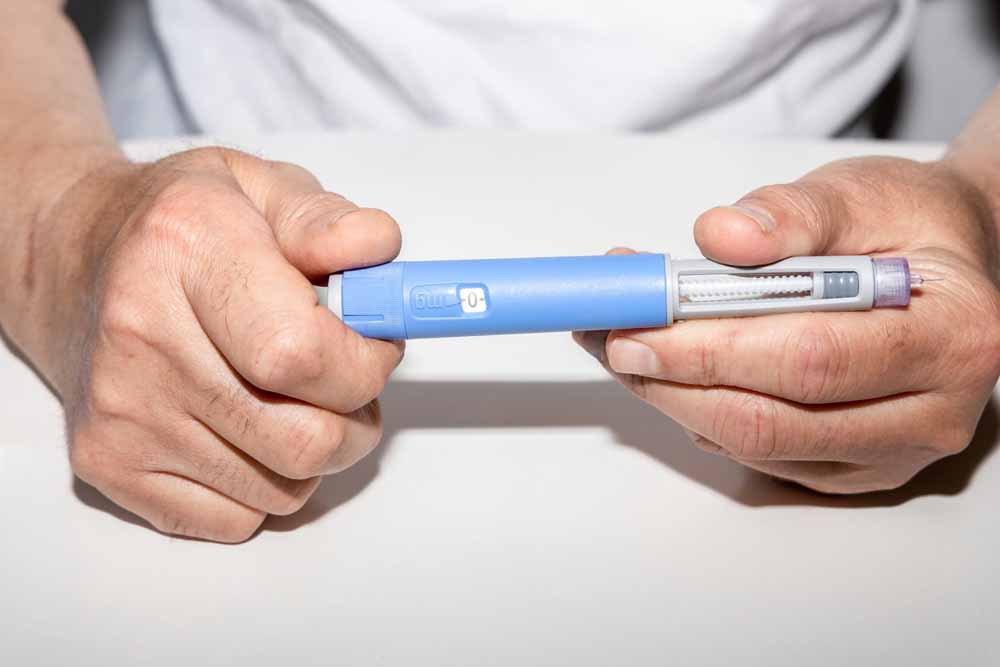Phoenix Car Accidents—Input From a Phoenix Car Accident Lawyer
Neglecting to Use Turn Signals Properly Contributes to Hundreds of Phoenix Car Accidents.
It seems like such an easy thing for a driver to do: Hit the signal before executing a turn. However, according to research at the Society of Automotive Engineers (SAE), improper use of turn signals accounts for nearly 2 million accidents per year. By comparison, distracted driving receives much more public attention, yet it is the cause of half as many accidents, some 950,000 crashes per year.
Hundreds of Billions of Driving Errors Each Year Put People at Risk
In the SAE study, researchers observed 12,000 cars nationwide and found that 48 percent of drivers failed to use their turn indicators during lane changes or neglected to turn them off afterward. Twenty-five percent of the drivers didn’t signal when making a turn. Based on these numbers, researchers estimate that drivers make signaling errors 750 billion times per year—some two billion times per day—substantially increasing the risk of a multi-vehicle accident. Other surveys confirm this, as half of all drivers admit to not using their turn signals.
Bad habits begin early for many drivers. Another study shows that 71 percent of drivers between 18 and 24 do not consistently signal when they turn. These are the exact drivers who need to exercise the most caution. Unfortunately, their driving habits do not get better as they get older.
The report calls for law enforcement to put more effort into sanctioning drivers who fail to signal correctly. Police often seem focused on drivers who are speeding or using a handheld device when driving without acting against something that is the root of most accidents. The report also calls for new cars to be equipped with a warning system to indicate when you do not use your turn signals properly.
The failure to signal could be a result of inattentiveness or carelessness. It can be even worse. Some drivers may be changing lanes while they are on their phones and may not activate their turn signal. They could be driving drunk and unaware that they have not signaled.
Why Failure to Signal Is an Even Bigger Problem in Arizona
In Arizona, there are many multi-lane wide roads. While this helps prevent traffic and gives drivers room to maneuver, it also means that drivers will be changing lanes. For example, I-10 in Downtown Phoenix will soon be expanding to up to eight lanes in each direction. There are over 1,400 lane miles on Phoenix-area freeways. In addition, the city streets are usually multi-lane, and drivers are continuously switching lanes.
Phoenix is also known for having major intersections. It is a car town, with roadways designed long after the advent of the automobile. This is why drivers must use turn signals.
Why It’s Important to Use Your Turn Signal
Using your turn signal is a very simple and effective way of preventing Phoenix car accidents. It allows you to communicate with others on the road, giving drivers time to slow down while you change lanes or turn.
Drivers need to know what the other drivers ahead of and surrounding them will be doing because that will dictate their actions. For example, if the car ahead will be turning, the driver will apply the brakes at some point and slow down. You need to anticipate because you will have to slow down as well. Using a turn signal too late is practically the same as not using it at all because it gives the driver little warning. Either way, they will have to slam the brakes, if they can even brake at all.
Arizona Laws Regarding Use of Turn Signals
Moreover, it’s the law. In Arizona, the statute exists in Title 28 of the Arizona Code. Specifically, Arizona Code 28-754 requires drivers to signal when they are making both left and right turns.
This is a must within 100 feet of making the turn. The driver must give this signal continuously before making the turn. It is not enough to simply flash a turn signal. Police can pull over drivers for taking their signal off before they complete a turn.
The fine for illegal turns is at the discretion of law enforcement. Illegal turns may also mean points on a driver’s license. However, this still does not persuade all Arizonans to properly signal before they turn. Sometimes, inattentiveness or laziness is too powerful of a pull.
Not online must drivers signal when they turn, they must also signal before:
- Lane changes
- U-turns
- Passing other drivers.
- Parallel parking
- Traffic circles
- Merging
- Pulling out into traffic
In other words, drivers must signal. If they do not, they can breach their duty to care. Specifically, this can be an act of negligence. Reasonable drivers will signal before they change lanes or enter traffic. The failure to do so is unreasonable under the law and can be the grounds for a negligence lawsuit.
As Richard Ponziani, President of RLP Engineering and author of the SAE report, emphasizes: “[A]ll drivers have an ongoing duty to use [their turn signal], just as they have a duty to stop at a stop sign or at a red light.”
How to Use Your Turn Signal Effectively
- Turn on your turn indicators about 100 feet (in some states, it’s 200 feet) in advance of your intended maneuver. These maneuvers may include turning, changing lanes, parking, or merging into traffic.
- Look carefully for vehicles and pedestrians before making the maneuver.
- Turn off your signal after the maneuver is complete. Leaving indicators on can confuse drivers around you.
If we all use our turn signals correctly, we can significantly reduce the number of accidents with just a flick of the wrist.
Why Many Drivers Do Not Use Their Signals
Drivers do not use their turn signals for many reasons. It really only takes a second to turn the signal on, and it saves lives. However, some motorists are just plain lazy and cannot even take the second it takes to turn the signal off and on. Others may just ignore the traffic law. This places both themselves and the other drivers on the road in danger.
Stunningly enough, some drivers claimed that they did not use turn signals because it took too much time. This act takes a fraction of a second, and it can save lives. Other drivers confirmed that they were too lazy to move their hands for an instant to engage their turn signal.
In the future, car manufacturers may design their vehicles with technology that can warn drivers not to turn without activating the turn signal. All it takes for some is a simple reminder if they are not thinking appropriately. However, for other drivers, it is a matter of changing their habits to make signaling while turning something that they automatically do.
While all turns may be dangerous, illegal left turns without signaling are even more hazardous than right turns. Left turning drivers must give way to oncoming traffic. Further, everyone else needs to know the driver’s intention when they try to turn left. First, it lets the drivers behind them know that they will turn, allowing them time to brake or change lanes themselves. Second, it informs drivers in oncoming traffic that they may turn. Failure to signal can cause left-turn crashes. The angle at which the cars crash can make these accidents deadly.
Proving Fault in a Turn Signal Accident
In most crashes, the failure to signal is the proximate cause for the accident. Usually, it is the driver who violates this law who is the one who is at fault. However, drivers can share fault in an accident, as well. For example, one driver could have failed to signal while the other was distracted or speeding. In this case, both may bear some of the blame for an accident. This is why it is crucial to have an attorney when you suffered injuries due to a car that failed to signal. There may still be some work to do in proving liability.
In addition, it is not always easy to prove that a driver did not signal before they turned. While you may be able to infer this from the circumstances of the accident, it is always better to have witness testimony or some other kind of proof that this happened. The other driver may say that they signaled, and you need something more than your word that they did not.
However, not everything is black and white when it comes to accidents that happened because of signaling. The insurance company may view these accidents based on their own facts rather than applying a bright-line rule. While signaling is a legal requirement, there may be numerous factors to blame for the accident.
Ways That Not Signaling Can Cause Accidents
Failing to signal can cause other accidents with unclear legal outcomes.
Here are some other possible accidents:
- The driver makes a right-hand turn signal but turns left. While the driver did signal, this is still a violation of the law. This seems like an innocent mistake, but it can cause injury.
- The driver made a signal but then changed their mind about making the turn. Although this is not technically illegal, it could cause drivers around them to take various actions in anticipation of a turn that never happened. This is still misusing a signal, but it may be a more difficult case to prove that the driver was at fault for the accident based on it.
Remember that Arizona laws allow for people to seek financial compensation, even if they are partly to blame for the accident. If you were the driver who failed to signal on a lane change, you may still be entitled to financial compensation.
How Turn Signal Accidents Cause Injuries
Turn signal accidents are among the most serious crashes. Cars can sideswipe or t-bone each other when someone fails to signal. When drivers must stop short, they can rear-end the driver in front of them. Usually, these are high-impact accidents. When a driver makes a lane change without signaling, they will usually hit another driver at a bad angle, often sideswiping a car where there is relatively little protection from the impact for occupants.
Turn signal accidents can cause the following injuries and more:
- Broken bones
- Traumatic brain injuries
- Lacerations
- Internal injuries
- Whiplash
- Neck injuries
- Back injuries
- Spinal cord injuries
- Soft tissue injuries
- Crush injuries
All of these injuries need immediate medical attention so you get the proper diagnosis and can begin your treatment plan right away. Having these records can help to prove the nature and extent of your injuries to the insurance company when it comes time to file a claim.
Once you get your initial diagnosis, treatment for traumatic injuries can proceed for some time. You might need time in the hospital, surgeries, and more. Rehabilitative therapy is common for most traumatic injuries, as well as rest from work and other usual tasks. Needless to say, treating your injuries can be costly in money, time, and other losses. You must hold any liable parties accountable for all of these losses, as well as the pain and suffering you experienced.
How Turn Signal Accidents Will Affect Your Life
The physical injuries caused by these accidents can cause:
- Temporary or permanent disability – you may not be able to go to school or work while you recover from the accident. For some, this may be for an extended time.
- Loss of ability to earn an income – when you miss a long period of work, you may not be able to earn the paycheck that you need to keep a roof over your head and food on the table. Some people may not be able to do the work that they did before, especially when their job was physically demanding.
- Impacts on your quality of life – your accident injuries could keep you from enjoying the things that you did beforehand. Your life may not be the same on multiple levels.
- Physical and emotional pain – your accident injuries can cause you significant discomfort. This is not only physical, but it can be emotional as well. The stress of dealing with the aftermath of an accident can cause you and your family significant anxiety.
As you can see, multiple narratives can emerge after any car accident. The usual rule of the tailing car being at fault for an accident may not apply if the front car failed to signal before turning. The insurance company can see this type of accident in many ways.
How a Lawyer Will Handle Your Turn Accident Claim
You need someone on your side who can tell your own story and help back it up with the evidence that gives it more weight. This is why you need to call an attorney right after your car accident. Even if the other driver failed to signal, they may blame the accident on you.
In addition to eyewitness testimony, your attorney may also use the following to prove your claim:
- Police report
- Traffic camera or dashcam footage
- Citations issued to a driver
Phoenix car accident cases can be complicated to start with, and turn signal accidents have extra layers of complexity. If you try to handle your case on your own, you may find yourself either not receiving compensation at all or receiving far less than you legally deserve. Do not let that happen to you. The insurance company can end up taking your legal rights away from you, and going without an attorney is the same thing as letting them do it.
Contact a Phoenix Turn Signal Accident Lawyer Today
Have you been involved in a Phoenix car accident where a driver did not use turn signals correctly? We can help you. Contact Zanes Law Injury Lawyers at (602) 999-9999 to see how we can help. You can also obtain additional car accident claim information by clicking here.
If you feel like you do not have the money to hire an attorney, don’t worry. It costs you nothing out of your pocket for our services, and we do not receive any payment unless you win your case.




